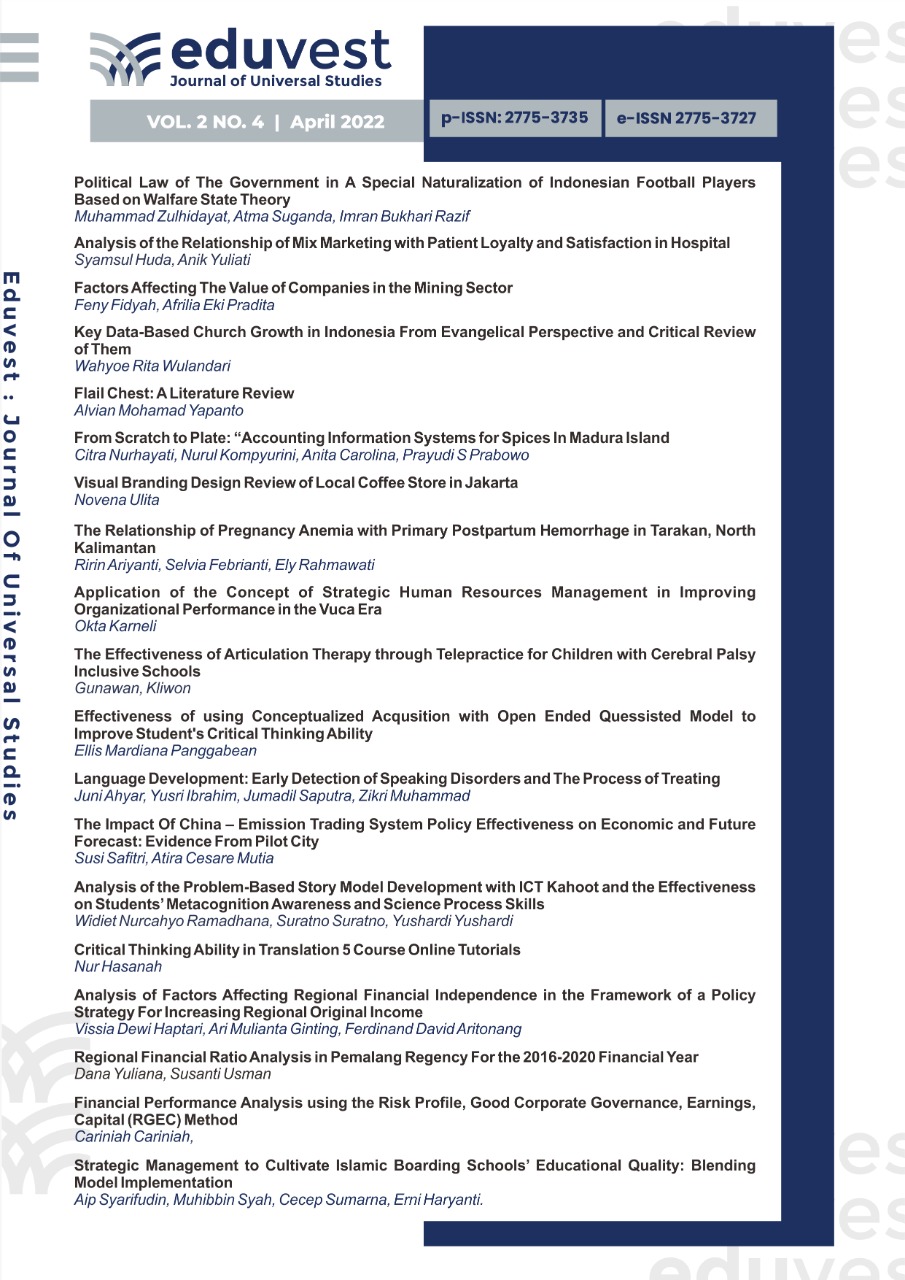Language Development: Early Detection of Speaking Disorders and The Process of Treating
DOI:
https://doi.org/10.59188/eduvest.v2i4.420Keywords:
Early Detection, Speech Disorders, Treatment ProcessAbstract
The old paradigm which states that speech disorders in children are normal so that when they become a disorder, it will have an impact on the process of language development of children to adulthood. The number of cases of speech disorders found in children caused by the delay in early detection by parents. This is due to the lack of information regarding children's speech disorders. The purpose of writing this article is 1) to find out the stages of children's language development, (2) to find out the causes of speech and language disorders in children and (3) to find out the symptoms and the process of handling speech and language disorders in children. The article writing methodology uses a systematic literature review approach to 39 articles. The results of the writing obtained four stages of children's language development, namely the babbling stage (the babbling stage), the holophrastic stage (the one-word one-phrase stage), the two-word one-phrase stage (telegraphic) and the differentiation stage. Every child has a different range of stages. Factors that cause children's speech disorders that can be caused by medical factors, physiological factors and environmental factors. Children's speech disorders can be in the form of delays in language development, aphasia, speech organ disorders, hearing problems, autism, emotional and behavioral disorders. Treatment of speech disorders can be done with speech therapy, oral motor therapy and melodic intonation therapy. The implications of writing this article can be used as a reference by parents and health practitioners to carry out early detection and the process of handling speech disorders.
Published
How to Cite
Issue
Section
License
Copyright (c) 2020 Juni Ahyar, Yusri Ibrahim, Jumadil Saputra, Zikri Muhammad

This work is licensed under a Creative Commons Attribution-ShareAlike 4.0 International License.











